
Sternhalma, commonly known as Chinese checkers or Chinese chequers, is a strategy board game of German origin that can be played by two, three, four, or six people, playing individually or with partners. The game is a modern and simplified variation of the game Halma. "Complexity: requires no counting or spelling; even young children can play."
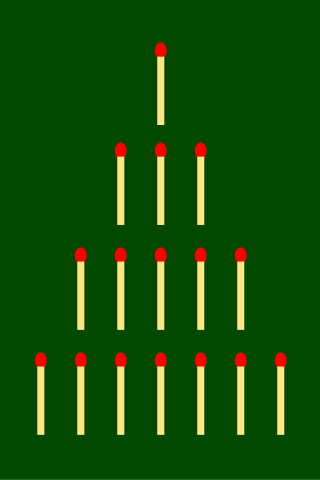
Nim is a mathematical game of strategy in which two players take turns removing objects from distinct heaps or piles. On each turn, a player must remove at least one object, and may remove any number of objects provided they all come from the same heap or pile. Depending on the version being played, the goal of the game is either to avoid taking the last object or to take the last object.

Abalone is a two-player abstract strategy board game designed by Michel Lalet and Laurent Lévi in 1987. Players are represented by opposing black and white marbles on a hexagonal board with the objective of pushing six of the opponent's marbles off the edge of the board.
A solved game is a game whose outcome can be correctly predicted from any position, assuming that both players play perfectly. This concept is usually applied to abstract strategy games, and especially to games with full information and no element of chance; solving such a game may use combinatorial game theory and/or computer assistance.
In mathematics, the nimbers, also called Grundy numbers, are introduced in combinatorial game theory, where they are defined as the values of heaps in the game Nim. The nimbers are the ordinal numbers endowed with nimber addition and nimber multiplication, which are distinct from ordinal addition and ordinal multiplication.

Concentration is a round game in which all of the cards are laid face down on a surface and two cards are flipped face up over each turn. The object of the game is to turn over pairs of matching cards.
In philosophy, a supertask is a countably infinite sequence of operations that occur sequentially within a finite interval of time. Supertasks are called hypertasks when the number of operations becomes uncountably infinite. A hypertask that includes one task for each ordinal number is called an ultratask. The term "supertask" was coined by the philosopher James F. Thomson, who devised Thomson's lamp. The term "hypertask" derives from Clark and Read in their paper of that name.
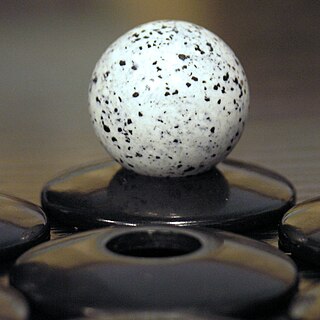
ZÈRTZ is the third game in the GIPF Project of seven abstract strategy games. The game features a shrinking board and an object that promotes sacrifice combinations. It is impartial: since neither player owns on-board pieces, maintaining the initiative is of fundamental importance.

A marble is a small spherical object often made from glass, clay, steel, plastic, or agate. They vary in size, and most commonly are about 13 mm in diameter. These toys can be used for a variety of games called marbles, as well being placed in marble runs or races, or created as a form of art. They are often collected, both for nostalgia and for their aesthetic colors.
B-Daman is a marble shooting toy franchise produced in Japan by Takara. It was originally based on the Bomberman series, but later expanded into other franchises and its own original designs.

The Digi-Comp I was a functioning, mechanical digital computer sold in kit form. It was originally manufactured from polystyrene parts by E.S.R., Inc. starting in 1963 and sold as an educational toy for US$4.99.
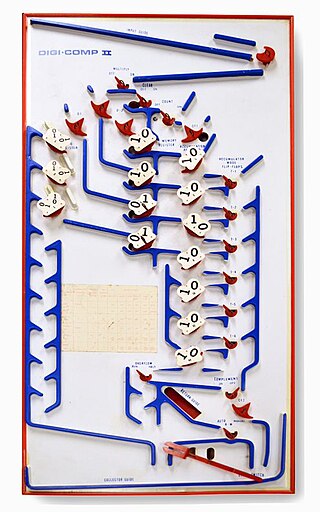
The Digi-Comp II was a toy computer invented by John "Jack" Thomas Godfrey (1924–2009) in 1965 and manufactured by E.S.R., Inc. in the late 1960s, that used 1⁄2 inch (12.5 mm) marbles rolling down a ramp to perform basic calculations.
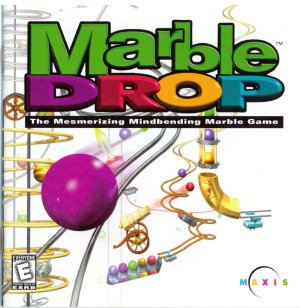
Marble Drop is a puzzle video game published by Maxis on February 28, 1997.
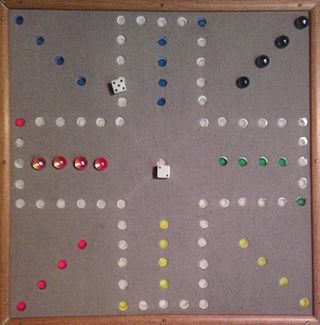
Aggravation is a board game for up to four players and later versions for up to six players, whose object is to be the first player to have all four playing pieces reach the player's home section of the board. The game's name comes from the action of capturing an opponent's piece by landing on its space, which is known as "aggravating". The name was coined by one of the creators, Lois Elaine, who did not always enjoy defeat.

Stay Alive is a strategy game, where 2-4 players try to keep their marbles from falling through holes in the game board while trying to make their opponents' marbles fall through. It was originally published by Milton Bradley in 1971 and marketed in television and print advertising as "the ultimate survival game". Stay Alive was republished with a smaller board by Winning Moves Games USA in 2005. This game is no longer in production.
In combinatorial game theory, poset games are mathematical games of strategy, generalizing many well-known games such as Nim and Chomp. In such games, two players start with a poset, and take turns choosing one point in the poset, removing it and all points that are greater. The player who is left with no point to choose, loses.

Avalanche, also marketed as Lawine in the Netherlands, Avalancha in Spain, and Astroslide or Skill in Germany, is an abstract, mechanical strategy game published by Parker Brothers in 1966 that features colored marbles that roll down an inclined board.

The Nimatron was an electro-mechanical machine that played Nim. It was first exhibited in April–October 1940 by the Westinghouse Electric Corporation at the 1939-1940 New York World's Fair to entertain fair-goers. Conceived of some months prior by Edward Condon and built by Gerald L. Tawney and Willard A. Derr, the device was a non-programmable digital computer composed of electro-mechanical relays which could respond to players' choices in the game in a dozen different patterns. The machine, which weighed over a metric ton, displayed four lines of seven light bulbs both in front of the player and on four sides of an overhead cube. Players alternated turns with the machine in removing one or more lights from one of the rows until the lights were all extinguished. The calculations were purposely delayed to give the illusion that the machine was considering moves, and winners received a token.

Marienbad was a 1962 Polish puzzle mainframe game created by Elwro engineer Witold Podgórski in Wrocław, Poland for its Odra 1003. It was an adaption of the logic game nim. Inspired by the discussion in the magazine Przekrój of a variant of nim in the 1961 film Last Year at Marienbad, named "Marienbad" by the magazine, Podgórski programmed the game for the in-development 1003 mainframe, released in 1963. The game had players opposing the computer in alternating rounds of removing matches from a set, with the last player to take a match the loser. As the computer always played the optimal moves, it was essentially unbeatable.
In combinatorial game theory, a subtraction game is an abstract strategy game whose state can be represented by a natural number or vector of numbers and in which the allowed moves reduce these numbers. Often, the moves of the game allow any number to be reduced by subtracting a value from a specified subtraction set, and different subtraction games vary in their subtraction sets. These games also vary in whether the last player to move wins or loses. Another winning convention that has also been used is that a player who moves to a position with all numbers zero wins, but that any other position with no moves possible is a draw.












